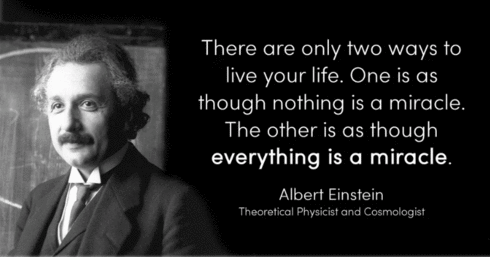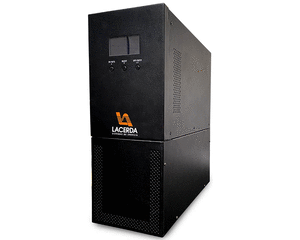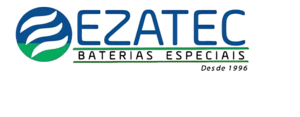PSIM Expert – Design of Power Factor Correction (PFC) converters
Place: Stuttgart, Germany
Date: September 24 – 25, 2019
Course fees:
990 Euros* for industrial participants.
750 Euros* for academic participants.
*
Instructors:
– Dr. Antonio Lazaro Blanco
Language: English
Public and technical background required
The training course is recommended to everybody interested in the theoretical aspects and practical design issues of digital control of voltage source converters. Having previous experience in power electronics and circuit simulation is useful, but beginners with no background in those topics will also benefit from the course.
Training Objectives
The objective of the course is to acquire the fundamental competences in single-phase and three-phase PFC converters. These competences are:
Selection of the best topology for each type of application (EV chargers, motor drives, aerospace AC/DC front-end converters and power supplies).
Inductors design under the specific requirements of the PFC operation. Effective Cots inductor selection.
EMI filter design.
Power losses calculations and MOSFET / IGBT / Diodes selection.
Dynamic analysis of dynamic modeling of PFC converters.
Simple but deep understanding the PFC control loops.
Effective analog and digital controller design using SmartCtrl.
Effective PSIM simulation of 1-ph & 3-Ph PFC converters (including conducted EMI estimation by simulation).
In addition to the topology selection, specific aspects regarding the previous competences will be shown for each type of application.
Antonio Lázaro was born in Madrid, Spain, in 1968. He received the M. Sc. in electrical engineering from the Universidad Politécnica de Madrid, Spain, in 1995. He received the Ph. D. in Electrical Engineering from the Universidad Carlos III de Madrid in 2003.
He has been an Assistant Professor of the Universidad Carlos III de Madrid since 1995. He has been involved in power electronics since 1994, participating in more than 50 research and development projects for industry. He holds seven patents and software registrations and he has published nearly 140 papers in IEEE journals & conferences. His research interests are switched-mode power supplies, power factor correction circuits, inverters (railway and grid connected applications), modeling and control of switching converters and digital control techniques.
LINK:
https://powersys-solutions.com/design-of-power-factor-correction-converters-september-2019/
No Blog Eletrônica de Potência você encontrará informações sobre teses,artigos,seminarios,congressos,tecnologias,cursos,sobre eletrônica potência. “TEMOS O DESTINO QUE MERECEMOS. O NOSSO DESTINO ESTA DE ACORDO COM OS NOSSOS MERITOS” ALBERT EINSTEIN. Imagination is more important than knowledge, for knowledge is limited while imagination embraces the entire world. EL FUTURO SE CONSTRUYE HOY,EL SUCESSO NO ES FRUTO DE LA CASUALIDAD,SE HUMILDE ,APRENDE SIEMPRE CADA DIA.
AUTOR DO BLOG ENG.ARMANDO CAVERO MIRANDA SÃO PAULO BRASIL

.gif)
“GRAÇAS A DEUS PELA VIDA,PELA MINHA FAMÍLIA,PELO TRABALHO.PELO PÃO DE CADA DIA,POR NOS PROTEGER DO MAL”
“SE SEUS PROJETOS FOREM PARA UM ANO,SEMEIE O GRÂO.SE FOREM PARA DEZ ANOS,PLANTE UMA ÁRVORE.SE FOREM PARA CEM ANOS,EDUQUE O POVO”


https://picasion.com/


quinta-feira, 29 de agosto de 2019
domingo, 25 de agosto de 2019
sábado, 24 de agosto de 2019
quinta-feira, 22 de agosto de 2019
Operation and Control Strategy of a New Hybrid ESS-UPS with Function of Demand Management and Emergency Power Supply- Kim, Sang Jin-The Graduate School of Industry and Engineering Seoul National University of Science and Technology
Operation and Control Strategy of a New Hybrid ESS-UPS with Function of Demand Management and Emergency Power Supply Kim, Sang jin (Supervisor Choi, Se Wan) Dept. of Electrical and Instrumentation Eng. The Graduate School of Industry and Engineering Seoul National University of Science and Technology
This paper proposes a hybrid energy storage system (ESS) that integrates an ESS with an on-line uninterruptible power supply (UPS). The power conversion system (PCS) cost of the proposed hybrid ESS-UPS is reduced, and battery utilization is increased by using the energy of the integrated battery for both demand management and emergency power supply. Further, unlike the conventional on-line UPS, the proposed hybrid ESS-UPS is capable of supplying emergency power to two types of critical loads, voltage-frequency independent (VFI) load and voltage-frequency dependent (VFD) load. A seamless mode transfer algorithm of the ac-dc converter is proposed for supplying uninterruptible power to the VFD load as well. In addition, an autonomous and seamless mode transfer algorithm of the bidirectional dc-dc converter is proposed to minimize the transient across the dc-link that could affect the power quality of the VFD load and the VFI load at the mode transition. To validate the proposed control scheme, experimental results from a 5 kW prototype are provided.
LINK
https://www.mediafire.com/file/rx58cvuqnhm1r5f/Operation_and_Control_Strategy_of_a_New_Hybrid_ESS-UPS.pdf/file
Design of Controller for Hybrid UPS with Energy Storage System Function Author Oh, Jin Hong School of Electrical Engineering and Computer Science, Graduate School of Chungbuk National University Cheongju, Korea
Design of Controller for Hybrid UPS with Energy Storage System Function Author Oh, Jin Hong School of Electrical Engineering and Computer Science, Graduate School of Chungbuk National University Cheongju, Korea
A thesis for the degree of Master in August 2018
Abstract
With the active technological development of modern communication systems, advanced medical equipment, advanced living facilities, and emergency systems that requires high-quality energy are more and more widespread used in everyday life, which require more reliable, efficient, and uninterrupted electricity supply. Due to increase of these critical loads, a power supply with high quality and reliability is more important than ever. Consequently, Uninterruptible Power Supply(UPS) has recently experienced a growing demand. According to the International Electrotechnical Commission Standard IEC 62040-3, the UPS systems are categorized into on-line UPS, off-line UPS, line interactive UPS according to the energy flow direction under normal utility condition. Among them, The on-line UPS is receiving more intention from the researchers and engineers because of its outstanding capability of suppressing grid frequency variation, voltage irregularity and other power issues. However, because the stored energy of UPS battery is used only when these issues happen, battery utilization rate is very low. Therefore, hybrid UPS that integrates ESS with an on-line UPS has recently developed. Unlike the conventional UPS, hybrid UPS can increase battery utilization rate by using the stored energy of battery when the grid is under normal operation. whereas when the grid fails, hybrid UPS has to supplies emergency power to critical loads. Therefore, transient voltage across the DC-link that could affect the power quality of critical loads can occur during mode transition. this paper addresses new operation strategy of three phase hybrid UPS with Energy Storage System(ESS) function to minimize the transient voltage across the DC-link. PSCAD/EMTDC software is used to verify validity of the proposed operation scheme.
LINK
https://www.mediafire.com/file/lyxxcnyvv9nbwrl/Design_of_Controller_for_Hybrid_UPS_with_Energy_Storage.pdf/file
sábado, 17 de agosto de 2019
Microgeração residencial: um estudo de caso para um sistema fotovoltaico em Belo Horizonte – MG-Autor Adriano Jose Pinto Pinheiro-UNIVERSIDADE FEDERAL DE SANTA MARIA -BRASIL
Microgeração residencial: um estudo de caso para um sistema fotovoltaico em Belo Horizonte – MG
Autor Adriano Jose Pinto Pinheiro-UNIVERSIDADE FEDERAL DE SANTA MARIA
A produção de energia elétrica através de instalações de pequena escala, conhecida como microgeração, apresenta um forte potencial para a redução da fatura de energia atual e, simultaneamente, contribui para a redução de gases que provocam o efeito estufa. Desde 17 de abril de 2012, quando entrou em vigor a Resolução Normativa ANEEL nº 482/2012, o consumidor brasileiro pode gerar sua própria energia elétrica a partir de fontes renováveis ou cogeração qualificada e inclusive fornecer o excedente para a rede de distribuição de sua localidade. Trata-se da micro e da minigeração distribuídas de energia elétrica, inovações que aliam economia financeira, consciência socioambiental e autossustentabilidade. O presente trabalho tem por objetivo apresentar as tecnologias atuais para implantação da microgeração no setor residencial, sendo estas, tecnologias de Microturbinas, Micro Centrais Hidrelétricas, Painéis Solares Fotovoltaicos e Aerogeradores de Pequeno Porte. Também será apresentado um estudo de caso de uma usina solar fotovoltaica implantada em uma residência na cidade de Belo Horizonte.
LINK:https://repositorio.ufsm.br/bitstream/handle/1/12564/TCCE_EEAPP_EaD_2017_PINHEIRO_ADRIANO.pdf?sequence=1&isAllowed=y
Autor Adriano Jose Pinto Pinheiro-UNIVERSIDADE FEDERAL DE SANTA MARIA
A produção de energia elétrica através de instalações de pequena escala, conhecida como microgeração, apresenta um forte potencial para a redução da fatura de energia atual e, simultaneamente, contribui para a redução de gases que provocam o efeito estufa. Desde 17 de abril de 2012, quando entrou em vigor a Resolução Normativa ANEEL nº 482/2012, o consumidor brasileiro pode gerar sua própria energia elétrica a partir de fontes renováveis ou cogeração qualificada e inclusive fornecer o excedente para a rede de distribuição de sua localidade. Trata-se da micro e da minigeração distribuídas de energia elétrica, inovações que aliam economia financeira, consciência socioambiental e autossustentabilidade. O presente trabalho tem por objetivo apresentar as tecnologias atuais para implantação da microgeração no setor residencial, sendo estas, tecnologias de Microturbinas, Micro Centrais Hidrelétricas, Painéis Solares Fotovoltaicos e Aerogeradores de Pequeno Porte. Também será apresentado um estudo de caso de uma usina solar fotovoltaica implantada em uma residência na cidade de Belo Horizonte.
LINK:https://repositorio.ufsm.br/bitstream/handle/1/12564/TCCE_EEAPP_EaD_2017_PINHEIRO_ADRIANO.pdf?sequence=1&isAllowed=y
Palestra – Modulação Vetorial, Espaço Ortogonal e Modulação Multinível-Dra. Fernanda de Morais Carnielutti-Prof.da UNIVERSIDADE FEDERAL DE SANTA MARIA-BRASIL-28/08/2019
Palestra – Modulação Vetorial, Espaço Ortogonal e Modulação Multinível
Uma breve biografia da palestrante: “Possui graduação em Engenharia Elétrica em 2010, pela Universidade Federal de Santa Maria, UFSM. Durante seus estudos de graduação, trabalhou com energia eólica no Grupo de Pesquisa de Eletrônica e Controle de Energia, GEPOC, na UFSM. Recebeu seu mestrado e doutorado em 2012 e 2015, respectivamente, da mesma universidade. Recebeu bolsas de estudo das agências do governo brasileiro CNPq (Conselho Nacional de Desenvolvimento Científico e Tecnológico) de 2007 a 2010 durante sua graduação. Foi aluna de mestrado da CAPES (Coordenação de Aperfeiçoamento de Pessoal de Nível Superior) de 2010 a 2012 e aluna do CNPq, de 2012 a 2016, durante os estudos de doutorado e pós-doutorado. Foi presidente do IEEE Student Branch da UFSM e do IEEE IAS SB Chapter da UFSM. Foi professora da Universidade Federal de Santa Maria, UFSM – Campus Cachoeira do Sul, de 2016 a 2018. Atualmente, é professora da Universidade Federal de Santa Maria, da UFSM – Campus Santa Maria, professora do Programa de Pós-Graduação em Engenharia Elétrica – PPGEE-UFSM e membro da IEEE Power Electronics, Industrial Electronics and Industry Application Societies.”
Entrada franca.
LINK ORIGINAL:http://ieeesb.paginas.ufsc.br/2019/08/13/palestra-modulacao-vetorial-espaco-ortogonal-e-modulacao-multinivel/
Uma breve biografia da palestrante: “Possui graduação em Engenharia Elétrica em 2010, pela Universidade Federal de Santa Maria, UFSM. Durante seus estudos de graduação, trabalhou com energia eólica no Grupo de Pesquisa de Eletrônica e Controle de Energia, GEPOC, na UFSM. Recebeu seu mestrado e doutorado em 2012 e 2015, respectivamente, da mesma universidade. Recebeu bolsas de estudo das agências do governo brasileiro CNPq (Conselho Nacional de Desenvolvimento Científico e Tecnológico) de 2007 a 2010 durante sua graduação. Foi aluna de mestrado da CAPES (Coordenação de Aperfeiçoamento de Pessoal de Nível Superior) de 2010 a 2012 e aluna do CNPq, de 2012 a 2016, durante os estudos de doutorado e pós-doutorado. Foi presidente do IEEE Student Branch da UFSM e do IEEE IAS SB Chapter da UFSM. Foi professora da Universidade Federal de Santa Maria, UFSM – Campus Cachoeira do Sul, de 2016 a 2018. Atualmente, é professora da Universidade Federal de Santa Maria, da UFSM – Campus Santa Maria, professora do Programa de Pós-Graduação em Engenharia Elétrica – PPGEE-UFSM e membro da IEEE Power Electronics, Industrial Electronics and Industry Application Societies.”
Entrada franca.
LINK ORIGINAL:http://ieeesb.paginas.ufsc.br/2019/08/13/palestra-modulacao-vetorial-espaco-ortogonal-e-modulacao-multinivel/
quinta-feira, 15 de agosto de 2019
COMPARATIVA PRECIOS INVERSORES FOTOVOLTAICOS TOP 10 FABRICANTES
LINK
https://notecpol.com/comparativa-de-precios-inversores-instalacion-solar-fotovoltaica/
quarta-feira, 14 de agosto de 2019
15TH BRAZILIAN POWER ELECTRONICS CONFERENCE (COBEP/SPEC)December 01-04, 2019 in the city of Santos, state of São Paulo (SP)
LINK1:http://inep.ufsc.br/files/2019/04/CFP-COBEP-SPEC-2019_v9.pdf
LINK2:https://sobraep.org.br/2018/05/17/15th-brazilian-power-electronics-conference-cobep-spec/
15th Brazilian Power Electronics Conference (COBEP/SPEC)The Brazilian Power Electronics Conference is one of the most important Brazilian forums for researchers in power electronics. It is an outstanding opportunity to present our work and interact with each other, strengthening the participation of industry and academia.The conference will be held in December 01-04, 2019 in the city of Santos, state of São Paulo (SP).
Certificação de Instaladores de Sistemas Fotovoltaicos SENAI/SSCP no Brasil - Fernando Gusmão, SENAI/SSCP e Enio de Oliveira, SENAI/SSCP
Seminário Mecanismos de Qualidade no Setor Fotovoltaico Foi realizado MECANISMOS DE QUALIDADE NO SETOR FOTOVOLTAICO 10 agosto de 2018 9h00 às 17h00 Auditório do IEE/USP - Av. Prof. Luciano Gualberto, 1.289 - Cidade Universitária, São Paulo O Seminário discutiu questões estruturais que contribuem para promover a qualidade nas instalações fotovoltaicas. Ele será baseado no conceito Quality Infrastructure da Agência Internacional de Energias Renováveis (IRENA) que envolve três mecanismos, que são: a) Normas e Regulamentação; b) Certificação de Produtos; c) Certificação de Pessoas.
LINK ORIGINAL NA WEB:
http://www.iee.usp.br/?q=pt-br/evento/semin%C3%A1rio-mecanismos-de-qualidade-no-setor-fotovoltaico
terça-feira, 13 de agosto de 2019
ENSAIOS DE INVERSORES PARA SISTEMAS FOTOVOLTAICOS CONECTADOS À REDE: RESULTADOS E ANÁLISE DE CONFORMIDADE José Cesar de Souza Almeida Neto – André Mocelin – Roberto Zilles – Universidade de São Paulo, Instituto de Energia e Ambiente João Tavares Pinho – Universidade Federal do Pará-GRID-TIE PHOTOVOLTAIC SYSTEM INVERTER TEST: RESULTS AND CONFORMITY ANALISYS BRASIL
Resumo.
No Brasil, a necessidade crescente por sistemas de geração solar fotovoltaica conectados à rede de distribuição levou ao desenvolvimento de normas brasileiras para a conformidade de inversores. Assim, de forma a atender à população em geral, foi publicada a Portaria 357, de 01 de agosto de 2014, do Instituto Nacional de Metrologia, Qualidade e Tecnologia (INMETRO), que inclui inversores para conexão à rede de potência nominal até 10 kW no Programa Brasileiro de Etiquetagem (PBE). Por possuir os equipamentos necessários para a realização dos ensaios de conformidade com a portaria 357, o Laboratório de Sistemas Fotovoltaicos (LSF) do Instituto de Energia e Ambiente da Universidade de São Paulo passou então a ser o primeiro laboratório acreditado pelo INMETRO para a realização desses ensaios. Este trabalho tem como objetivo resumir as experiências de aplicação das normas brasileiras no ensaio de inversores para o PBE no LSF, sendo apresentados os resultados obtidos nos ensaios de 15 inversores ao longo de três anos de operação da bancada de ensaio para sistemas conectados à rede, e a descrição das não conformidades encontradas. A partir desses ensaios conclui-se que, embora as normas brasileiras exijam rigor em seus requisitos, existem inversores capazes de atender aos requisitos normativos brasileiros, assim como existem inversores que necessitam de implementações nos respectivos firmwares de controle e sistemas de comunicação para conseguirem atender a todos os requisitos.
Palavras-chave: Energia Solar, Ensaio de Inversores, Normas Brasileiras
LINK ORIGINAL
https://anaiscbens.emnuvens.com.br/cbens/article/download/297/297/
No Brasil, a necessidade crescente por sistemas de geração solar fotovoltaica conectados à rede de distribuição levou ao desenvolvimento de normas brasileiras para a conformidade de inversores. Assim, de forma a atender à população em geral, foi publicada a Portaria 357, de 01 de agosto de 2014, do Instituto Nacional de Metrologia, Qualidade e Tecnologia (INMETRO), que inclui inversores para conexão à rede de potência nominal até 10 kW no Programa Brasileiro de Etiquetagem (PBE). Por possuir os equipamentos necessários para a realização dos ensaios de conformidade com a portaria 357, o Laboratório de Sistemas Fotovoltaicos (LSF) do Instituto de Energia e Ambiente da Universidade de São Paulo passou então a ser o primeiro laboratório acreditado pelo INMETRO para a realização desses ensaios. Este trabalho tem como objetivo resumir as experiências de aplicação das normas brasileiras no ensaio de inversores para o PBE no LSF, sendo apresentados os resultados obtidos nos ensaios de 15 inversores ao longo de três anos de operação da bancada de ensaio para sistemas conectados à rede, e a descrição das não conformidades encontradas. A partir desses ensaios conclui-se que, embora as normas brasileiras exijam rigor em seus requisitos, existem inversores capazes de atender aos requisitos normativos brasileiros, assim como existem inversores que necessitam de implementações nos respectivos firmwares de controle e sistemas de comunicação para conseguirem atender a todos os requisitos.
Palavras-chave: Energia Solar, Ensaio de Inversores, Normas Brasileiras
LINK ORIGINAL
https://anaiscbens.emnuvens.com.br/cbens/article/download/297/297/
sexta-feira, 9 de agosto de 2019
가정용 ESS를 고려한 하이브리드 PCS A Hybrid PCS Considering on a Residential Energy Storage System-(Doo-Yong Jung․Ji-Hwan Kim․Seong-Chon Choi․Su-Won Lee․-Dept. of Information and Communication Engineering, Sungkyunkwan University
A Hybrid PCS Considering on a Residential Energy Storage System 정 두 용*․김 지 환*․최 성 촌*․이 수 원**․한 희 민**․원 충 연† (Doo-Yong Jung․Ji-Hwan Kim․Seong-Chon Choi․Su-Won Lee․Hee-Min Han․Chung-Yuen Won)
Abstract - In recent years, technology for storing a preliminary power or a surplus of photovoltaic energy is required. This technique, as well as store a preliminary energy and improve the reliability of the gird safety. This system can plan a efficient power generation through the flexibility of the power supply from the perspective of not only provider but also user. Accordingly, the realization of the smart grid can be expected. This paper proposes a hybrid PCS using a photovoltaic and a lithium-polymer battery with the characteristics of high density energy. The main energy source of a hybrid PCS is a photovoltaic, grid and the auxiliary energy source is a lithium-polymer battery. The operation of a proposed system in this paper is verified with simulation and experimental results.
Keywords : Hybrid PCS, Bi-directional converter, Bi-directional inverter, Charging method, Discharging method
† Corresponding Author: Dept. of Information and
Communication Engineering, Sungkyunkwan University,
Korea
E-mail : woncy@skku.edu
* Dept. of Information and Communication Engineering,
Sungkyunkwan University, Korea
LINK 1: http://society.kisti.re.kr/sv/SV_svpsbs03V.do?method=download&cn1=JAKO201305759635849
LINK2: https://www.mediafire.com/file/6mywgvfj1zq59kj/A_Hybrid_PCS_Considering_on_a_Residential_Energy_Storage_System.pdf/file
Design and control of a PV active generator with integrated energy storages : application to the aggregation of producers and consumers In an urban micro smart grid-THESE Présentée en vue d’obtenir le grade de DOCTEUR en Spécialité : Génie Electrique par Di LU DOCTORAT DELIVRE PAR L’ECOLE CENTRALE DE LILLE
General Introduction
Targets for future sustainable electrical networks The electricity is suffering from a constraint irrefutable: At any moment, electrical systems must ensure a balance between production and consumption, while maintaining a satisfactory voltage. Historically, grid reliability was mainly assured by having excess capacity in the system with unidirectional flow to dispersed consumers from centrally dispatched large power plants. To combat climate change and increase the EU’s energy security while strengthening its competitiveness, the EU Heads of State and Government have set a series of demanding climate and energy targets to be met by 2020, known as the "20-20-20" targets: • A reduction in EU greenhouse gas emissions of at least 20% below 1990 levels, • A 20% reduction in primary energy use compared with projected levels, to be achieved by improving energy efficiency, • 20% of EU energy consumption coming from renewable resources. Current limitation of the PV resource Today, renewable energies are considered as a potential solution for greenhouse gases emissions reduction and energy safety. Fueled by economic, environmental and social drivers, the penetration of photovoltaic generators rises in distribution networks. Thanks to its operation without noise and gas emission, it can be easily installed outdoor and on roofs. But the development of grid-connected PV generation is limited by the intermittent power generation and time-lag between the PV electrical production and the real consumption. A massive deployment of PV systems complicate the balancing between production and consumption, that may cause blackouts if it is disturbed A new concept: the PV based active generator Because of the intermittency of PV power generation, PV panels can not be used as a stable, reliable and controllable power source and can not provide ancillary services like conventional generators. The topic of this thesis is the transformation of a PV generator into an active generator by using an embedded energy storage system and a local energy management system for the coordination of inner sources. Long-term energy storage batteries are used to shave the midday PV power peak and provide a complementary power supply during the night. Fast dynamic ultracapacitors storage can smooth the generated PV power, compensate the power gap and absorb the instantaneous high power peaks. Local controller for a dispatched management Three sources with different characteristics must be coordinated inside the PV active
generator. So for ensuring an optimal operation, a local energy management system of the PV
based active generator has to be developed to enable:
• the management of the renewable energy intermittency and resources,
• the quality of power supply,
• the energy level management,
• the power system protection,
• the provision of grid ancillary services.
This PV based active generator is then an additional controllable dispersed generation,
which have to be dispatched. In the context of a large scale development of PV based active
generators, the operation mode of the electric network will have to be changed.
LINK
https://tel.archives-ouvertes.fr/tel-00586393/file/Lu_Di_DLE.pdf
Assinar:
Comentários (Atom)


















































